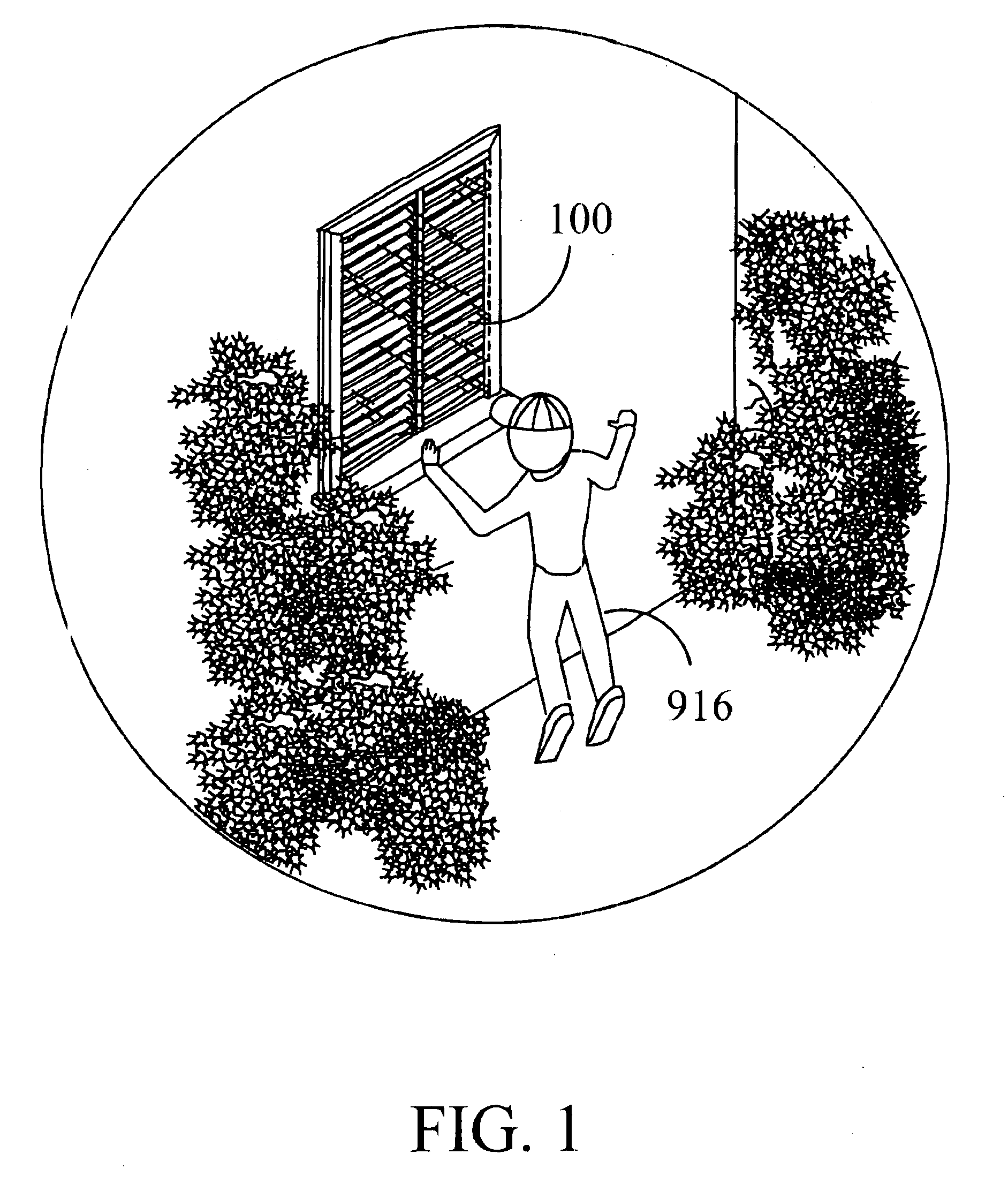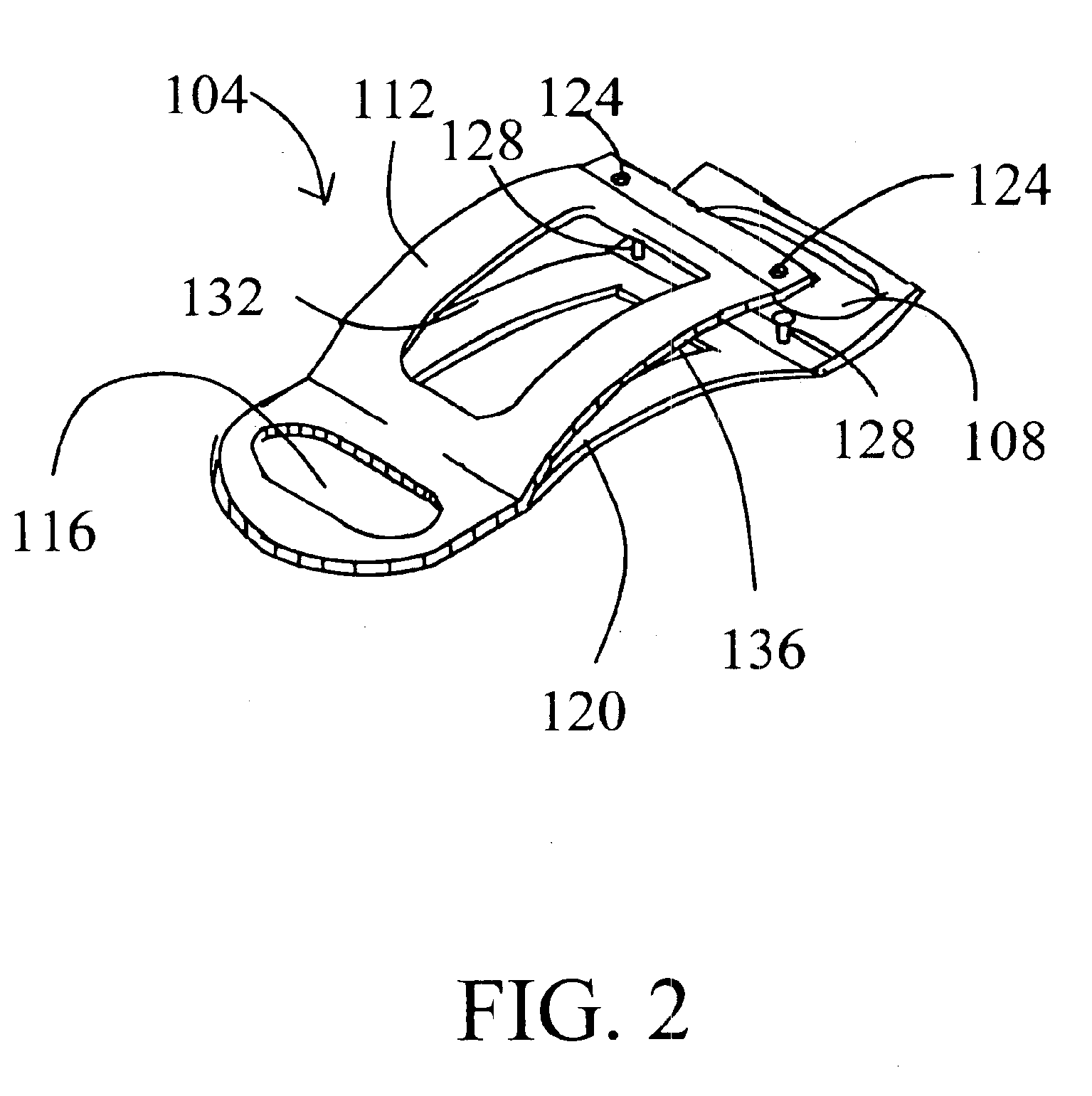High privacy horizontal window blind having slats with no cord holes and a special clip
a technology of horizontal window blinds and cord holes, applied in the field of window blinds, can solve the problems of no legal stoppage, huge increase in “light leakage, light leakage, etc., and achieve the effects of increasing “light leakage, reducing the risk of damage, and being easy to buy
- Summary
- Abstract
- Description
- Claims
- Application Information
AI Technical Summary
Benefits of technology
Problems solved by technology
Method used
Image
Examples
Embodiment Construction
Turning now descriptively to the drawings, in which similar reference characters denote similar elements throughout the several view, FIGS. 1 through 4 illustrate the Peeping Tom deterrent device (100) for horizontal window blinds of the present invention, indicated generally by the numeral (98).
FIG. 1 is a representation of the Peeping Tom problem.
The Peeping Tom Deterrent Design for Horizontal Window Blinds of the Present Invention (100) is installed, and when the Control Cord Hole Free Window Blind Slats (156) are tilt closed and lowered close, will prevent the Peeping Tom (916) from gazing through the Control Cord Hole Free Window Blind Slats (156), furthermore, the Left Edge Cover Strip (140), and the Right Edge Cover Strip (144) prevent the Peeping Tom (916) from gazing around the Window Casing Right Side (900) and Window Casing Left Side (904) which are shown in relation to the Window Casing Top (908) and the Window Casing Bottom (912), furthermore, the Clip (104) with a Fron...
PUM
 Login to View More
Login to View More Abstract
Description
Claims
Application Information
 Login to View More
Login to View More - R&D
- Intellectual Property
- Life Sciences
- Materials
- Tech Scout
- Unparalleled Data Quality
- Higher Quality Content
- 60% Fewer Hallucinations
Browse by: Latest US Patents, China's latest patents, Technical Efficacy Thesaurus, Application Domain, Technology Topic, Popular Technical Reports.
© 2025 PatSnap. All rights reserved.Legal|Privacy policy|Modern Slavery Act Transparency Statement|Sitemap|About US| Contact US: help@patsnap.com



